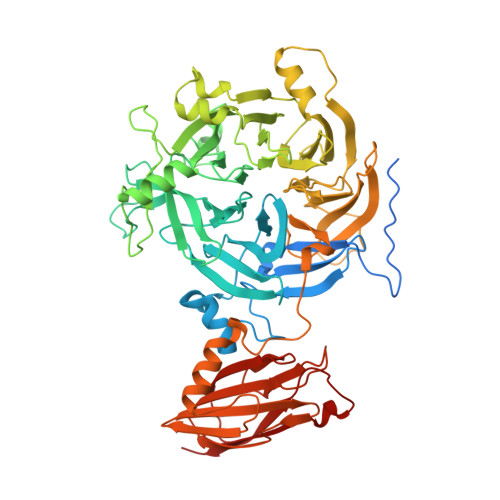Functional assembly of nitrous oxide reductase provides insights into copper site maturation.
Zhang, L., Wust, A., Prasser, B., Muller, C., Einsle, O.(2019) Proc Natl Acad Sci U S A 116: 12822-12827
- PubMed: 31189605
- DOI: https://doi.org/10.1073/pnas.1903819116
- Primary Citation of Related Structures:
6RKZ, 6RL0 - PubMed Abstract:
The multicopper enzyme nitrous oxide reductase reduces the greenhouse gas N 2 O to uncritical N 2 as the final step of bacterial denitrification. Its two metal centers require an elaborate assembly machinery that so far has precluded heterologous production as a prerequisite for bioremediatory applications in agriculture and wastewater treatment. Here, we report on the production of active holoenzyme in Escherichia coli using a two-plasmid system to produce the entire biosynthetic machinery as well as the structural gene for the enzyme. Using this recombinant system to probe the role of individual maturation factors, we find that the ABC transporter NosFY and the accessory NosD protein are essential for the formation of the [4Cu:2S] site Cu Z , but not the electron transfer site Cu A Depending on source organism, the heterologous host E. coli can, in some cases, compensate for the lack of the Cu chaperone NosL, while in others this protein is strictly required, underlining the case for designing a recombinant system to be entirely self-contained.
- Institut für Biochemie, Albert-Ludwigs-Universität Freiburg, 79104 Freiburg, Germany.
Organizational Affiliation:
























